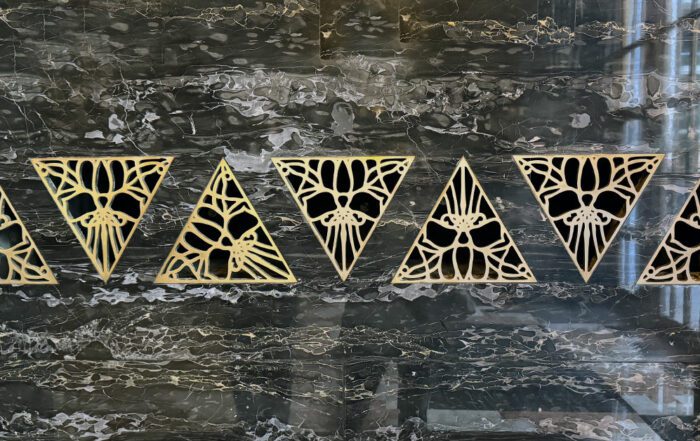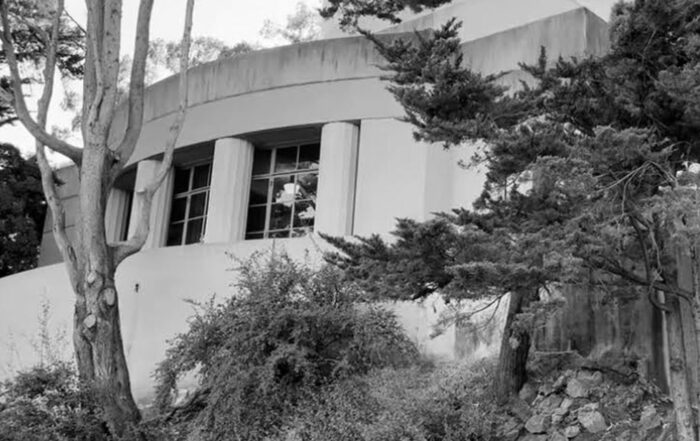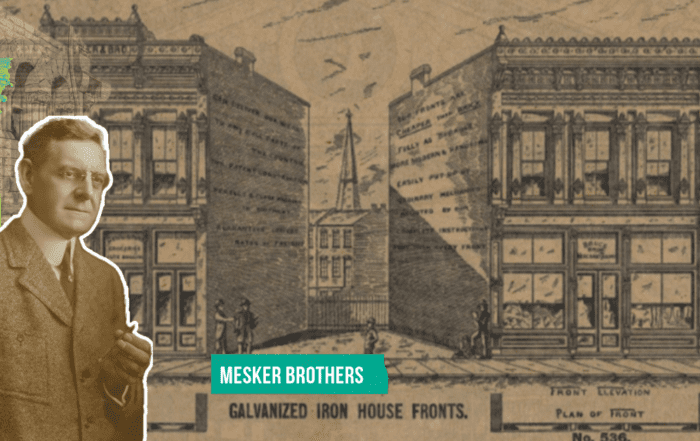Pagodas, Peacocks, and Preservation:
The Story of the Pui Tak Center
At the corner of Wentworth and Cermak, in the heart of Chicago’s Chinatown, stands a building that looks like it leapt straight out of a storybook—or maybe a mashup of three. Meet the Pui Tak Center: part Chinese pagoda, part classical temple, and 100% Chicago icon.
Originally built in 1928 as the On Leong Merchants Association Building, this beauty has worn many hats: community hub, cultural landmark, and unofficial “City Hall” of Chinatown. If these terra cotta walls could talk, they’d have a lot to say—probably in English, Cantonese, and a little architectural Greek.
A Building with an Identity Complex (In the Best Way)
Let’s start with the design. The building was the brainchild of two Norwegian-American architects, Christian Michaelsen and Sigurd Rognstad, who were tasked with designing something “very Chinese.” With no formal training in Chinese architecture but a lot of enthusiasm, they created a bold hybrid full of green-tiled roofs, pagoda towers, and vibrant terra cotta flair.
But here’s the twist: many of the decorative elements—think columns, symmetry, and some tile motifs—are straight out of the Greek and Roman playbook. As Anita Luk, former executive director of the Chinese American Museum of Chicago, noted, many of the building’s decorative features—such as brightly colored terra cotta and symmetrical motifs—draw more from Greek and Roman traditions than Chinese ones. And somehow, it works. The building is an East-meets-West fusion that’s become a beloved Chinatown landmark.
Oh, and those decorative tiles? Made right here in Illinois by the American Terra Cotta Company in Crystal Lake.
From Federal Raids to ESL Classes
In 1988, the building was seized by federal authorities during a gambling investigation, casting uncertainty on its future. In 1993, the Chinese Christian Union Church (CCUC) stepped in to preserve the landmark, purchasing the property for $1.4 million and renaming it the Pui Tak Center—translated as “to cultivate virtue.”
The CCUC undertook extensive interior renovations, transforming the space into a community hub offering ESL classes, youth programs, worship services, and immigrant support. That same year, the Pui Tak Center was designated a Chicago Landmark in recognition of its architectural and cultural importance.
Collaborative Restoration Efforts
Preserving the Pui Tak Center’s exterior has been a collaborative effort involving several organizations dedicated to historic preservation.
Bulley & Andrews Masonry Restoration (BAMR)
Leveraging a grant from the Citywide Adopt-a-Landmark Fund, BAMR undertook a comprehensive façade preservation project focusing on the building’s eastern and southern facades. The restoration included repairing and replacing damaged terra cotta elements, ensuring the building’s ornate details were preserved.
Allen Architectural Metals
Our firm was honored to contribute to the Pui Tak Center’s preservation by restoring the building’s ornate cast iron canopy at the main entrance. This process involved removing the canopy, performing structural stabilization, repairing and repainting the metalwork, and carefully reinstalling it to maintain the building’s historical integrity.
A Step Toward National Recognition
In May 2025, the program committee of the Commission on Chicago Landmarks voted to support the Pui Tak Center’s nomination to the National Register of Historic Places. If approved, it would be the first building in Chicago’s Chinatown to receive this national designation—underscoring its significance as a cultural and architectural treasure.
As the building moves closer to national recognition, it stands not only as a preserved historic structure, but as a living embodiment of Chinatown’s enduring spirit and the power of community-driven preservation.
Aunt Kitty and Uncle George Visit Chicago
They may have been bothered by the cold and busy with a wedding, but still found the time to reach out to Ann and Marty. What was it about this card that drew them in? Were they as intrigued with Pui Tak as we are today?
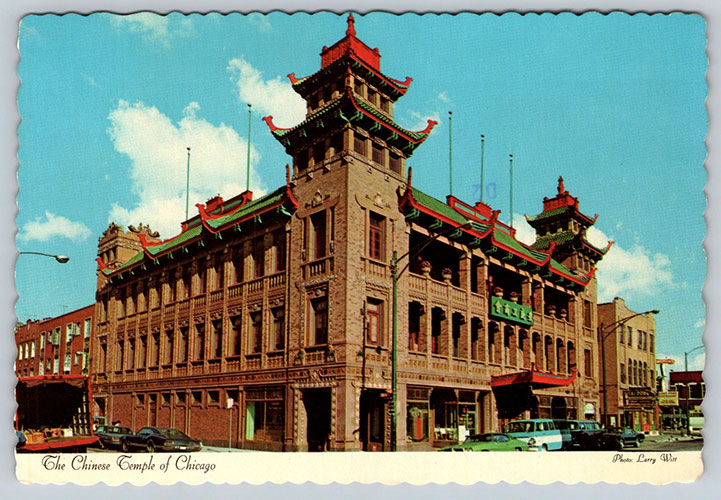
Postcard, 1970’s
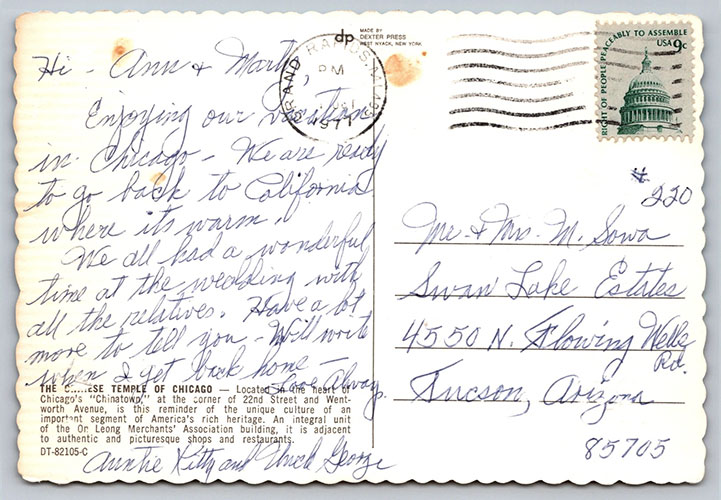
Postcard, 1970’s


